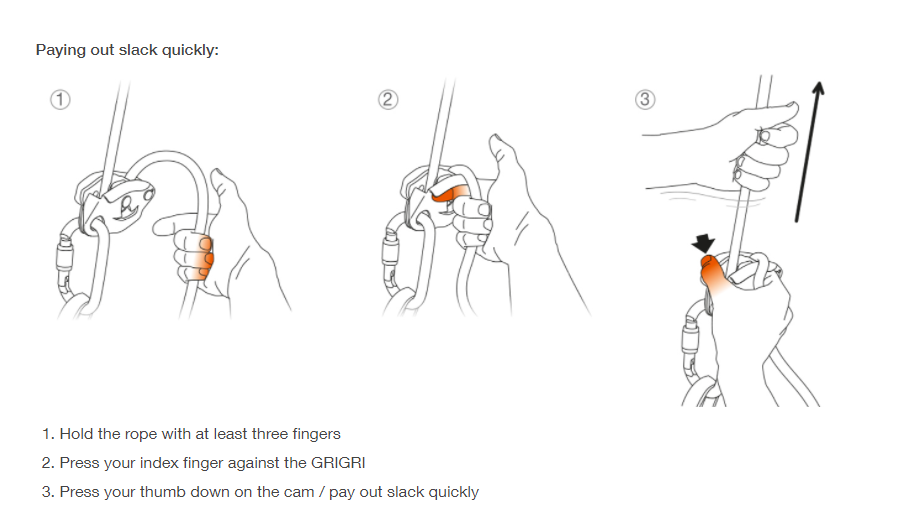Every climber, even the ones who prefer different types of belay devices, has used a GriGri at least once. Petzl’s innovative assisted braking device marked the history of safety practices at the crag: it’s incredibly easy to use and unfortunately, that is why climbers tend to not pay enough attention while belaying their partner. It’s important to always keep in mind that safety relies not only on the device itself but also on its correct use.
To learn and improve your belaying technique, you need practice and consistency (and possibly, starting off with a climbing course!). You can also check out Petzl Sport’s video instructions to get an idea of how a GriGri works ("how to belay the leader" nad "how to belay with a GriGri". But let’s take a look at the most common mistakes climbers make while using a GriGri. We will start with the assumption that the GriGri is correctly placed, the rope has been properly threaded, and the partner check is spot on.
The rope gets stuck while feeding slack
Feeding slack smoothly throughout your partner’s climb is no easy job. You may have followed every instruction from your climbing course, and listened to all the tips from your climbing-experienced friends, but when it’s time to put it all into practice it definitely is challenging. Beginners tend to keep the rope in tension, making it even more difficult for the climber to proceed. In this scenario, when it’s time to clip a quickdraw, the climber will try to pull the rope but it will inevitably get stuck in the device. The more they pull, the more “stuck” the rope gets, and the harder it is to un-cam the device and feed slack leading quickly to a stressful situation both for the climber and belayer.
This is a relatively common mistake and it occurs especially when you are not paying enough attention to what you are doing (even though this should never be the case), or when belaying someone on an overhanging route with reduced visibility. It can be easily avoided, by giving undivided attention to your partner and developing a great communication system with them. Here are some tips about "how to pay out slack"
Feeding slack while holding the cams down with your hand
Frequently, we see belayers holding the cams down while feeding slack. To avoid this potentially dangerous practice, Petzl published an instruction video showing how to feed slack while holding the brake hand of the rope. This is the only safe way to do it, to avoid high falls while your partner is clipping their quickdraw. Imagine finding yourself in the opposite situation: would you climb at your full potential if you knew your belay partner wouldn't pay extra attention while feeding slack or holding the brake hand of the rope?
For some additional tips, we recommend taking a look at Petzl’s “Belay with the GriGri” article.

Rope management in case of a fall
This is something that depends not only on the belay device but mostly on your belay technique. It will come naturally with practice, but it takes some time to master flawless and smooth rope management. “Dynamic belaying” refers to giving a soft catch to your climbing partner but it’s not always the best solution. It all depends on the wall features, and where your partner is. A dynamic belay might result in them falling all the way to the ground if they are at the bottom of the route. On the other hand, a static belay when falling from way above might be dangerous as well, and cause injuries. It is crucial to evaluate every situation and act accordingly.
We would like to add that it’s also very important to know how much slack to give and when. On dynamic moves, for example, try not to “hold back” the rope and feed some extra slack through. This could help your partner’s momentum and also avoid getting the GriGri uncomfortably stuck.
Disclaimer: the intent of this article is uniquely informative and is not to be considered exhaustive. Please refer to the instruction manual for more specific information. The suggestions listed do not account for professional advice. Please seek help from professional trainers and alpine guides for your first climbing experience. Make sure to complete a climbing course before climbing outdoors on your own.
Sources: Petzl Belaying with the Gri Gri, "Sicurezza in Montagna", Versante Sud book, Petzl Access Book #5, Petzl Access Book #1
Cover photo credits: John Tuesday
